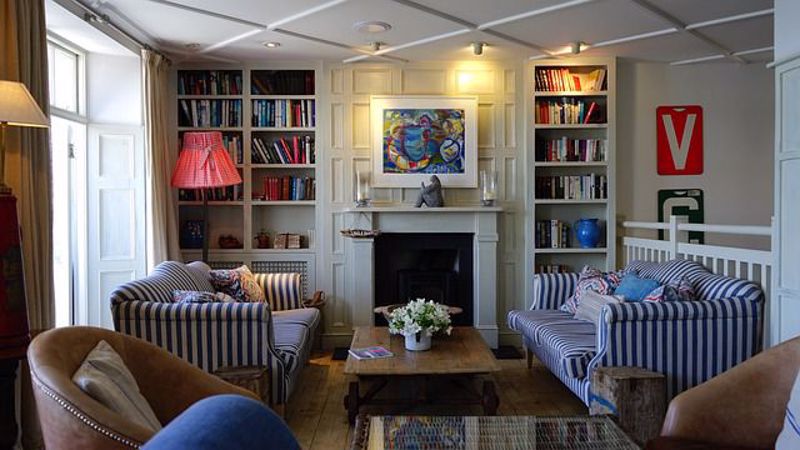When it comes to interior design, two terms often used interchangeably are "contemporary" and "modern." While they share similarities, they are distinct design styles, particularly when it comes to furniture. In this blog post, we will explore the differences between contemporary and modern design furniture, focusing on their characteristics, aesthetics, and suitability for different home styles. By understanding the nuances of each style, you can make an informed decision on which design approach would best suit your home and personal preferences. For all your furniture needs a Home Depot Discount Coupon from We Are Coupons will save you money on quality furniture to suit any taste.
Understanding Contemporary Design Furniture
Contemporary design refers to the furniture and decor styles that are popular and relevant to the present time. It is ever-evolving and embraces a range of influences, combining elements from various eras and design movements. Contemporary furniture often features clean lines, smooth surfaces, and a minimalist aesthetic. It tends to prioritize functionality and simplicity, with an emphasis on comfort and practicality.
Exploring Modern Design Furniture
Modern design refers to a specific design era that emerged in the early to mid-20th century, characterized by the Modernist movement. Modern furniture showcases a sleek and minimalistic aesthetic, often with organic forms, geometric shapes, and an emphasis on functionality. It embraces new materials and innovative techniques. Key features of modern design include simplicity, clean lines, and a focus on open spaces and natural light.
Characteristics of Contemporary Design Furniture
Contemporary design furniture exhibits several distinct characteristics:
Neutral Color Palette: Contemporary furniture often features a neutral color palette, with shades of white, gray, beige, or black as the foundation. Bold pops of color may be incorporated through accessories or accent pieces.
Clean Lines: Contemporary furniture is known for its clean and sleek lines. It avoids excessive ornamentation and intricate details, favoring simplicity and a minimalist approach.
Mixed Materials: Contemporary furniture embraces a mix of materials, including metal, glass, wood, and even plastic. It combines different textures and finishes to create visual interest.
Comfort and Functionality: Contemporary design places a strong emphasis on comfort and functionality. Furniture is designed to be comfortable for everyday use, with ergonomics in mind.
Characteristics of Modern Design Furniture
Modern design furniture has distinct features that set it apart:
Minimalistic Aesthetic: Modern furniture exhibits a minimalistic aesthetic, often with a focus on simplicity and clean lines. It aims to create a sense of openness and spaciousness.
Organic and Geometric Forms: Modern furniture designs often incorporate organic and geometric forms, inspired by nature and influenced by the Modernist movement. Curved lines and asymmetrical shapes are common.
Innovative Materials: Modern design embraces innovative materials of its time, such as molded plywood, plastic, and metal. The use of these materials allows for unique and sculptural furniture designs.
Open and Airy Spaces: Modern design prioritizes open and airy spaces. It often incorporates large windows, open floor plans, and an integration of indoor and outdoor living.
Suitability for Different Home Styles
Choosing between contemporary and modern design furniture depends on your home style and personal preferences:
Contemporary Furniture: Contemporary design furniture is versatile and adaptable to various home styles. Its clean lines and neutral color palette make it suitable for minimalist, Scandinavian, or transitional interiors. Contemporary furniture can also complement traditional spaces, adding a touch of modernity.
Modern Furniture: Modern design furniture suits homes with a more streamlined and minimalist aesthetic. It is ideal for mid-century modern, industrial, or minimalist interiors. Modern furniture can create a cohesive and cohesive look in spaces with an emphasis on simplicity and open floor plans.
Finding the Right Balance
While contemporary and modern design furniture have their unique characteristics, it is worth noting that they can be blended together to create an eclectic style that suits your preferences. Many contemporary designs incorporate modern influences, and vice versa. Mixing and matching furniture pieces from both styles can create an interesting and personalized look in your home.
Conclusion
Understanding the differences between contemporary and modern design furniture is key to choosing the right style for your home. Contemporary design furniture reflects the present time, focusing on simplicity, clean lines, and comfort. On the other hand, modern design furniture pays homage to the mid-20th-century Modernist movement, emphasizing minimalism, innovative materials, and organic forms. Consider your home style and personal preferences when selecting furniture, and don't be afraid to blend elements from both styles to create a unique and personalized space that reflects your taste and lifestyle.




